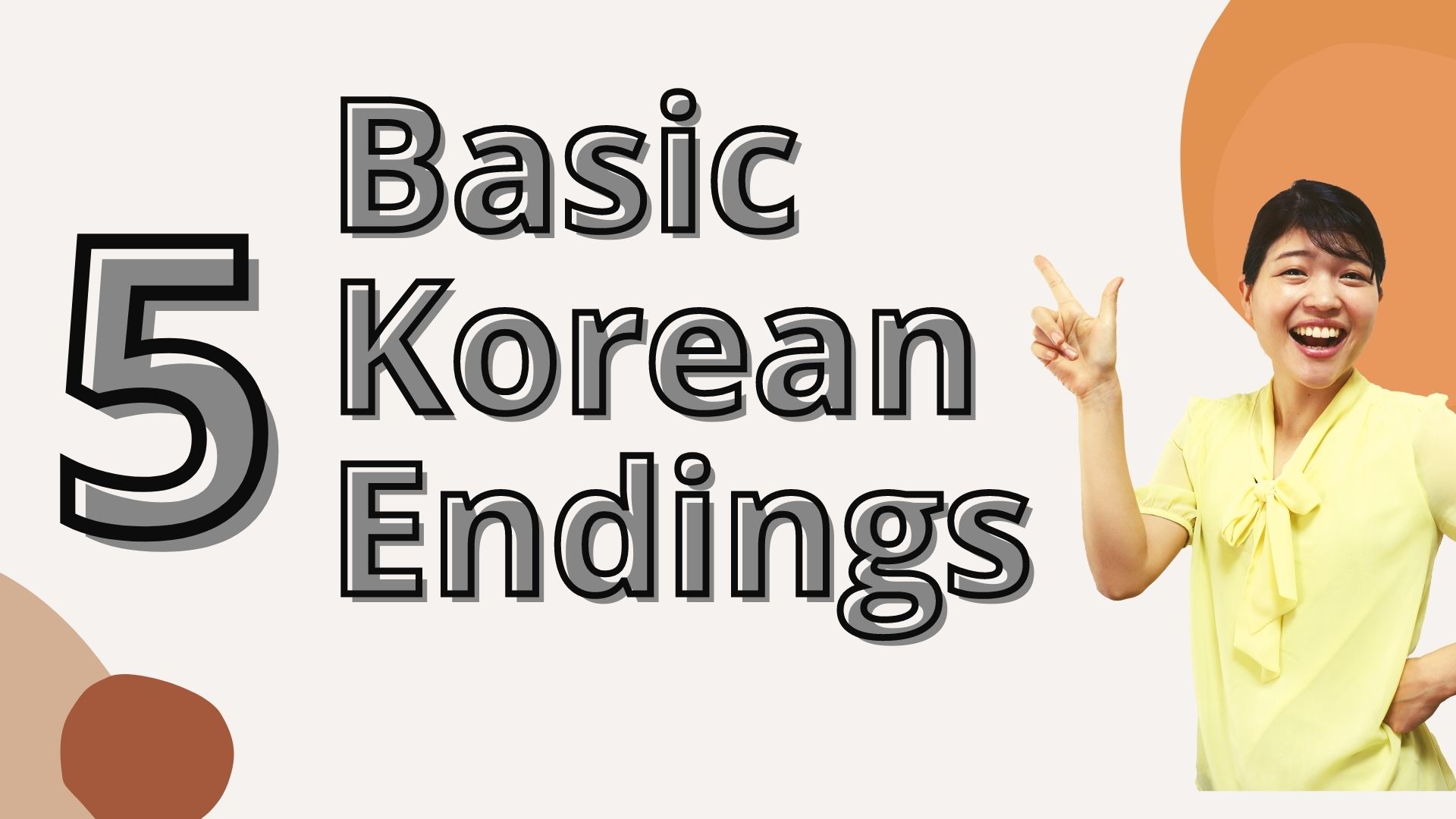안녕하세요. 토미입니다!
Today, I will teach you 5 basic Korean endings.
These are -요, -ㅂ니다, -세요, -(으)ㄹ 수 있어요/없어요, and -네요.
These endings are the most fundamental, so let’s go through them one by one.
그럼 시작할게요!
Before we dive in, I would like to explain Korean grammatical structure.
In Korean, various sentence endings express essential information, like past, present, and future tenses, or negative and question forms.
It is the opposite in English, in which the most important information comes at the beginning.
For example, in English, you say, “I don’t go.”
This “don’t” contains two essential facts. One is present tense, and the other one is a negative sentence.
On the other hand, if you translate this sentence into Korean, it is going to be 저는 가지 않아요.
This -지 않아요 has the same meaning as “don’t” in English.
As you can see, essential factors such as positive or negative, future or past tense come at the beginning of a sentence in English.
On the other hand, in Korean, it comes at the end.
Since you are learning Korean, paying attention to the end of Korean sentences is important.
That said, I will explain five basic Korean endings.
-요 [yo]
First, if a sentence ends with 요[yo], it is categorized as 존댓말[jondaemal] “polite/formal language.” So, when you want to be polite, or someone is being polite, -요[yo] is used at the end of the sentence.
Korean people mainly use this 요 for polite conversation.
On the other hand, if you talk with your friends or close people, you can use 반말[banmal] “casual language” where you omit 요[yo].
For example,
저는 바빠요.
I’m busy.
Can you see 요 at the end?
It indicates this person is trying to be formal and polite.
If you omit 요 from this sentence, it is going to be 저는 바빠. “I am busy.”
As you can see, in English, it means the same as the previous sentence, but in Korean, since it does not have 요 at the end, it becomes a casual language, 반말, which you use with your close friends.
In addition, 요 has the meaning of “let’s~.”
So, if you want to invite someone to do something with you, you can use 요.
For example,
우리 같이 가요.
Let’s go together.
우리 같이 먹어요.
Let’s eat together.
Let’s move on to the following sentence ending -ㅂ니다, 습니다.
-ㅂ니다/-습니다 [p-nida]
Similar to 요(yo), -ㅂ니다/습니다 [p-nida] is put at the end of sentences to express politeness and formality.
Their meanings and roles are almost the same, but -ㅂ니다 [p-nida] sounds a lot more professional than 요[yo].
Therefore, in professional settings, such as the president’s keynote address in a forum or news reports, it is appropriate to use -ㅂ니다/습니다.
For example,
알겠습니다
I understand.
You can also say 알겠어요, but 알겠습니다 sounds more firm and professional.
-세요 [seyo]
Let’s see the third one. -세요[seyo] has 2 ways of usage: 1) greetings and 2) command politely.
Firstly, you show respect to others by using -세요 at the end.
It can be found in many greeting phrases, such as
안녕하세요 “Hello.”
안녕히 가세요 “Goodbye.”
안녕히 주무세요 “Good night.”
맛있게 드세요 “Please, enjoy your meal.”
Another usage is a very polite way of command.
For example, 봐요 means “Look,” but if you say 보세요, it becomes “please take a look” and sounds much softer and formal.
I’m sure if you are studying in a classroom in Korea, teachers often say 책을 읽으세요. “Please, read a book,” or 들어 보세요 “Please, listen.”
You can see teachers are asking you to do something gently.
-(으)ㄹ 수 있다/없다
The fourth one is -(으)ㄹ 수 있다/없다, which means “can/cannot.”
You can express your ability to do something.
For example,
저는 콘서트에 갈 수 있어요.
I can go to the concert.
제 친구는 콘서트에 올 수 있어요.
My friend can come to the concert.
저는 김치를 먹을 수 없어요.
I cannot eat Kimchi.
저는 운전할 수 없어요.
I cannot drive.
If you add particle 도 “too, as well” in the middle of this grammar, it is going to be -(으)ㄹ 수도 있다/없다.
It means “that is possible too” or “it might~.”
For example, we can change the previous sentences like this.
저는 콘서트에 안 갈 수도 있어요
I might not be going to the concert.
제 친구는 콘서트에 안 올 수도 있어요.
My friend might not come to the concert.
It is interesting to see how these small changes can make the meanings different.
-네요 [neyo]
Lastly, -네요[neyo] has 2 usages: 1)agree with the other person, 2)express surprise or admiration.
First, you use -네요 to agree with someone’s opinion.
For example, your friend recommended a restaurant to you, and you went there and agreed with your friend’s opinion.
Then you can say 여기 요리 맛있네요, meaning “You are right. I agree that this restaurant has good dishes.”
Another usage is to express something that you notice or are surprised by.
For example, you observed your friend and noticed that your friend’s hairstyle had changed.
You can say
머리 예쁘네요.
I find your hairstyle is pretty.
You can also say,
머리 예뻐요.
Your hairstyle is pretty.
But this can be a plain sentence and does not have the meaning of surprise.
To summarize, various sentence endings in Korean express the most important information, and I introduced 5 different endings commonly used in Korean sentences.
For example, -요 is the polite expression mainly used in conversation, -ㅂ니다/습니다 is a professional way of saying, -세요 is a gentle way of command, -(으)ㄹ 수 있다/없다 is an expression of possibility, and -네요 is to show your agreement or surprise.
By changing the sentence’s endings, you can convey your feelings and attitude to the other person more accurately.
OK. have fun in Korean!
그럼 오늘도 행복 가득, 웃음 가득한 하루 되세요! 한국어 화이팅, 화이팅, 화이팅!!



